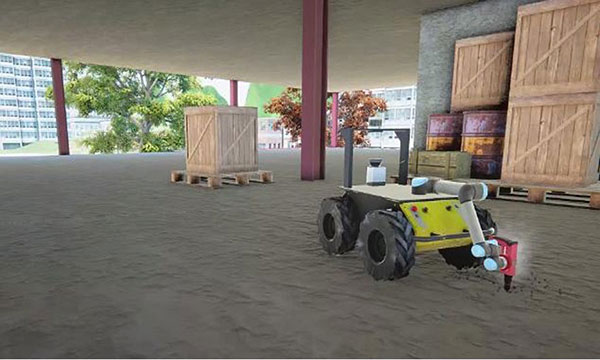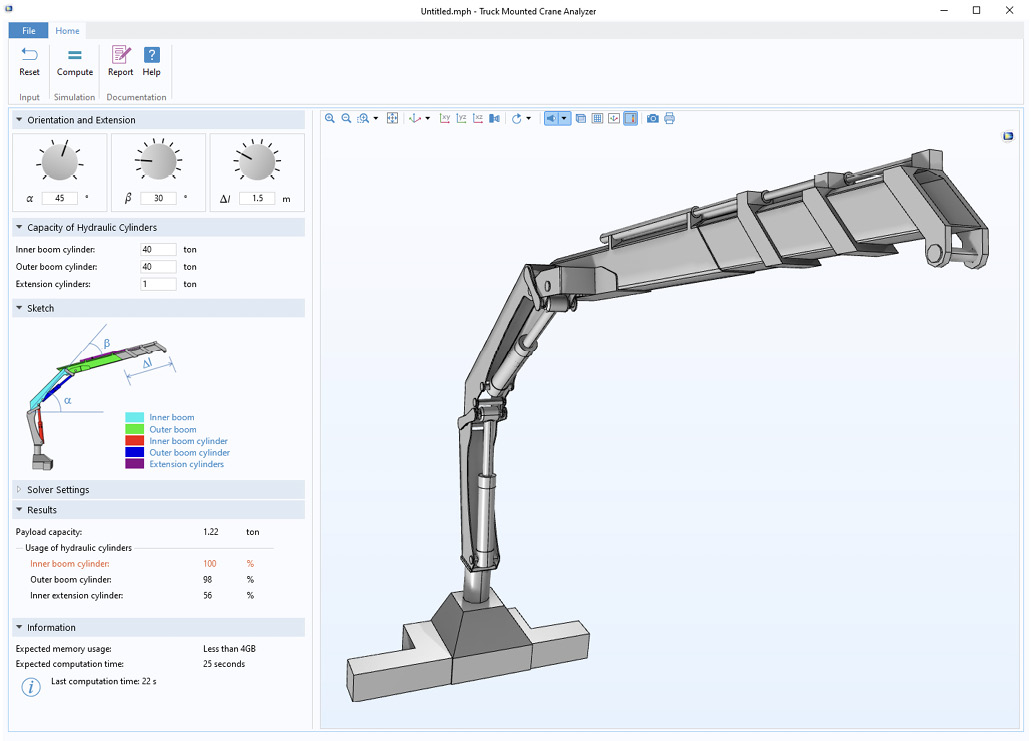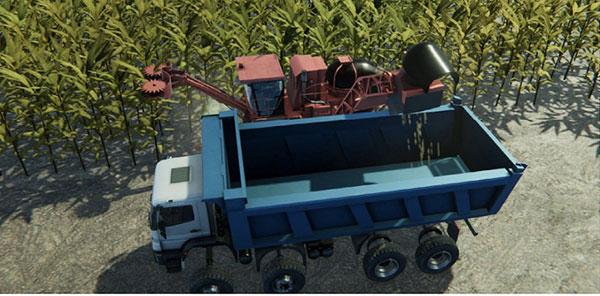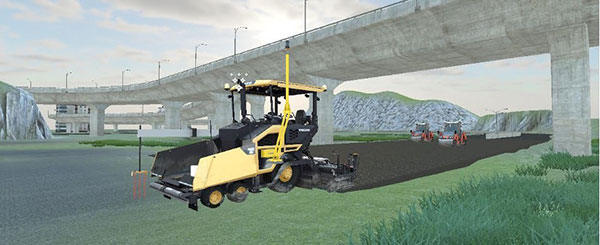
In picking a simulation system, developers can choose from many packages that cover training, testing, validation and certification. Image courtesy of Trimble.
Latest News
March 6, 2023
Autonomous mobile robots (AMRs) and robotic systems are impacting all avenues of our world. From warehouses to mining quarries, from airports to distribution and fulfillment centers, the unmanned vehicle or machine has long arrived. However, AMR adoption is still at the early stages.
Engineering design of AMRs has the advantage of better design tools and simulation software. However, there are many challenges in bringing them to full-scale use.
Complex Machines
A significant challenge in designing robotic systems is fully incorporating safety and performance. For most of the last century, innovators have visualized the use of autonomous vehicles and robots, dating back to the 1964 World’s Fair, where the “Land of Tomorrow” showcased the future of tomorrow’s society, complete with mobile vehicles in many forms. It has taken a while to get where we are in 2023. Designing reliable, performing, and safe autonomous anything is challenging. But progress has been made.
“Last year, the AMR and [automated guided vehicle (AGV)] industries saw a surge in growth, fueled by a greater need for automated solutions,” says Brian Cook of Conductix-Wampfler, a leader in mobile electrification and data transfer systems for industrial machinery based in Germany.
In 2023, companies that have already or are starting to invest in AMRs or AGVs must first consider efficient ways to guarantee operational effectiveness. Challenges when designing for autonomous robots come into play when charging solutions are unaccounted for, Cook says.

“Autonomous robotic systems are often complex and fast-moving projects, involving multiple sensors, actuators and controllers that need to work together seamlessly,” says Jon Hirschtick, chief evangelist for PTC, and co-founder of Onshape, a PTC business. “This complexity can make it challenging to design and debug the system, especially when dealing with different industries and environments. Being open to iterating on your designs often and using Agile development concepts helps to bring order to the chaos of fast-paced autonomous product design.”
Design Challenges
The challenges of designing autonomous robotic systems vary from industry to industry, says Sachin Chitta, director of robotics research at Autodesk.
“In general, autonomous systems must be designed from scratch as there are no easy-to-access mechanical or electrical designs to start with,” says Chitta. “Translating task and operational constraints (i.e., what the robot is supposed to do) to design requires substantial expertise and experience. Each task is unique in the constraints it imposes on the design of a robot. For example, a robot that picks strawberries in a crowded greenhouse will look very different from a robot that assembles electronics.”
Chitta also says that adding sensors to these systems requires a fair amount of understanding of how these sensors work and how they can be integrated into a large complex system.
“So, in the case of a warehouse or factory-picking robot, cameras must be carefully chosen based on the materials being dealt with and used,” says Chitta. “Designing production grade autonomous systems requires specialized expertise since there are no easy-to-use tools to test and validate the design, especially from a safety perspective.

Few common standards for components used in autonomous systems even exist. This means it’s often necessary to customize processes when using new sensors, grippers and other parts.
“There is no easy way to simulate a design quickly in the kind of application it will be deployed in,” Chitta explains. “Simulations are often slow and not accurate—especially when integrating contact or sensor simulation.”
Michael Mayr is the director of sales and business development, robotics and machining, industrial equipment industry at Dassault Systèmes. The robotics systems he sees most are in today’s digital factories as companies seek to leverage robotics to boost productivity. Dassault often works with those in this market with their tools and products to overcome the challenges of making factories smart, and smart factories smarter.
“An increasingly digital factory needs increasingly digital solutions to tie together disparate systems, processes and technologies,” says Mayr.
Mayr explains that currently many factory operators are using a model-based systems engineering approach, with technologies such as virtual twins and lifecycle assessment as part of the decision-making process, when considering technologies to invest in and how to manage any related equipment.
“At Dassault Systèmes, we are seeing how the robot market will completely change in the next eight years,” Mayr says. “Right now, most robots are stationary, caged robots, which just move stuff from one spot to the other. But the improvement of connectivity and safety technologies means we’re increasingly seeing autonomous mobile robots on factory floors.”
He notes that challenges include safety and global collaboration as well as the inconsistency of regulatory and engineering standards.
“Different industries, different markets and different countries will all have different standards,” adds Mayr. “The considerable rise in regulatory complexity within the industrial automation equipment market is a challenge that keeps many leaders rethinking the right approach.”
To meet global regulations and standards, it is necessary for robot manufacturers to seek effective regulatory management organizations and compliance capabilities. Companies can do this, according to Mayr, by leveraging new organizational strategies to drive cost-effective regulatory performance and reduced cycle times. “By anticipating the requirement for regulations and standards as early as the design stage, it allows the reduction of product development time and validation costs,” he says.
Regarding useful design tools, Siemens shares specific recommendations. “The key design tools from the automation simulation perspective are TIA Portal and S7-PLCSIM Advanced,” says Kevin Wu, a product manager with Siemens. “These two tools allow the user [to manage] validation of control logic as well as visualization at the PLC and HMI workflow level. The risk here is that utilizing only these two tools will not be sufficient to meet the simulation or modeling needs for machine builders or simulating an entire production cell, line or factory.”
That said, Wu notes that Siemens also offers the NX Mechatronics Concept Designer (NX MCD) for simulating the physical and kinematic model of mechanical components and SIMIT for modeling the electrical and behavior model to provide a comprehensive design tool for modeling and simulation to meet the customer needs.
Tools of the Trade
Designing robotic systems in today’s engineering environment is advantageous in that many new tools of the trade are available to design and simulate robotic machines and systems.
Aviad Almagor is the vice president of technology innovation at Trimble. He says that when considering a simulation system, developers have various packages that they can choose from, which cover training, testing, validation and certification.

“Typical commercial packages include simulation modules with capabilities such as sensor simulation (e.g., radar, Lidar, RGB cameras and SWIR), pre-defined and customizable scenarios, physics and integration with automated testing solutions,” says Almagor. “Using high-fidelity simulated environments reduces the cost associated with physical world testing and accelerates time to market.
Almagor adds, “Simulation tools provide an opportunity for testing the robotic system perception, localization and cognition processes in numerous environments with different combinations of sensors and sensor fusion algorithms. By harnessing AI technology, simulation tools enable test automation to cover real-world environmental conditions and edge cases.”
While helping shorten the time to market, simulation packages have some severe limitations and cannot wholly replace real-world testing, according to Almagor.
“Significant limitations include the accuracy and richness of the physical environment, challenging scenarios such as roadside construction, infrastructure deterioration and human comfort, as well as the need to generate and process millions of possible variations of critical scenarios,” he says.
Thomas Evans is the chief technology officer at Honeywell Robotics. He highlights the value of digital twins in robotics design.

“Digital twins are effective in simulating operations and evaluating optimal route planning for articulated and mobile robotic systems,” says Evans. “Digital twins give visibility on the actual output against expected parameters to gain better insight into areas that are underperforming or performing incorrectly. The digital view of your system will provide a tool for accurately predicting your potential for growth, identifying and correcting issue points before implementation, and streamline the future upgrades—all while driving operational consistency and revenue.”
But Evans says that with advantage comes associated risk—while digital twin technology is advancing with each day it exists and continuing to absorb and learn optimized operations. “There is always risk involved when working in the digital realm,” he says. “The initial inputs and outputs that drive the simulation solution are key to the accuracy of a digital twin. Verifying and validating the simulation model is critical to the data integrity and accuracy to represent the physical process.”
In addition to twinning and other simulation tools, augmented reality (AR) and virtual reality (VR) are proving useful. “Virtual reality and augmented reality are merging, whereby iterative usability testing throughout the entire design process is much quicker, productive and cost-effective,” says Sean Hägen, principal, founder and director of research and synthesis at BlackHägen Design. “VR is an especially affordable and easy-to-use development tool for early-stage development and in the training process, while AR combines VR with real-world props. Together, AR and VR are very effective for generating design inputs and making excellent design decisions.”
Our Next New World
A robotic system is complex, with mechanical components as well as electronic components needed to make the system autonomous, says Bjorn Sjodin, VP of product management at COMSOL.
“From an analysis perspective, it is important that the design engineer or analyst can simplify the analysis task to only include the relevant parts, which can be a challenging engineering decision,” Sjodin says. “There are many benefits of having a team with experience and expertise in modeling and simulation. In addition, simulation apps can help spread the use of simulation within the robotics community by providing customized user interfaces that are more user-friendly and accessible to individuals who may not have a strong background in physics or simulation.”
Due to robot system complexity, and a definite need to simulate designs, the future of engineering design of robotic systems and autonomous mobile robots will rely heavily on smart teams and tools that are fully engaged with the technology that can make robotic systems a useful part of our next new world.
More Autodesk Coverage
More COMSOL Coverage
More Dassault Systemes Coverage

Subscribe to our FREE magazine, FREE email newsletters or both!
Latest News
About the Author
Jim Romeo is a freelance writer based in Chesapeake, VA. Send e-mail about this article to [email protected].
Follow DE







